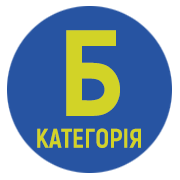BLOOM'S TAXONOMY AS A TOOL FOR THE DEVELOPMENT OF CRITICAL THINKING IN HIGHER LEGAL EDUCATION
DOI:
https://doi.org/10.51989/NUL.2022.2.18Keywords:
teaching quality, quality of education, legal education, critical thinking, Bloom's taxonomy, levels of thinking.Abstract
The article is devoted to the issues of improving the quality of higher legal education in Ukraine, in the context of applying the modern competence approach. Legal education traditionally continues to occupy places in the top three in the ranking of selected areas of education in Ukraine. Despite the debate over the quality of legal education and, unfortunately, its incomplete compliance with the needs of today, which has continued over the past few years in the field of legal practitioners, legal scholars and educators, young people continue to express interest in this profession, as its prestige remains at a high level. And the reform of legal education testifies to the intentions of domestic universities to correct the mistakes of the past, to hear the requests of employers and to ensure the rights of applicants to receive quality modern, up-to-date education. Universities face great challenges, the solution of which requires a clear definition of the concept of quality of legal education and improvement of the methodology for the development of competencies, especially intellectual ones. Improving or updating teaching methods, which are based not only on pedagogical but also andragogical principles, will help improve the level of educational services. The article is devoted to the consideration of improving the quality of higher legal education in Ukraine, in the context of using the modern competence approach. It is suggested on opportunistic usage of such pedagogical methods in law institutions during the teaching courses that will allow students to develop quickly and effectively all levels of thinking, including the critical thinking. It is defined, characterized and explained the history of Benjamin Bloom's Taxonomy of Learning Objectives and Outcomes, its transformation and adaptation to present-day educational needs. Both the classical hierarchy of thinking levels and the supplemented (updated) version of the taxonomy are presented. The possibilities of improving the methods of teaching disciplines through using of special model questions, which are focused on the development of a certain level of thinking of graduates, from the simplest – memorizing facts and terms, to the most difficult – creating a new intellectual product, as a result of critical analysis and understanding of information.
References
Набатов С.М. Актуальні проблеми розвитку навичок критичного мислення в науковому дискурсі. Вісник Черкаського національного університету імені Богдана Хмельницького. Серія: Педагогічні науки. 2019. № 3. С. 28–33. doi: 10.31651/2524-2660-2019-3-28-34.
Для чого в Україні 1200 університетів? – відповідає Михайло Винницький. Назва з екрану. URL: https://ac.ucu.edu.ua/dlya-chogo-v-ukrayini-1200-universytetiv-vidpovidayemyhajlo- vynnytskyj/.
Звіт за результатами аналітичного дослідження «Знання та навички випускників юридичних факультетів та закладів вищої освіти через призму відповідності потребам ринку праці». Назва з екрану. URL: https://minjust.gov.ua/ndd/yurydychna_osvita/doslidzhennya_u_ sferi_yurydychnoyi_osvity (дата звернення: 08.04.2022).
Комаров В. Вища юридична освіта України: нові виміри. Право України. 2017. № 10. С. 20–37.
Комар О.А. Теорія і практика застосування інноваційних інтерактивних технологій навчання в руслі концепції розвитку педагогічної освіти. Збірник наукових праць Уманського державного педагогічного університету. 2018. № 1. С. 130–139. URL: https://doi.org/10.314 99/2307-4906.1.2018.134900.
Панфілов Ю., Фурманець Б. Компетентнісний підхід в освіті: досвід, проблеми, перспективи. Теорія і практика управління соціальними системами. Філософські та антропологічні парадигми сучасної освіти. 2017. № 3. С. 55–68.
Черновський О.К., Меленко О.В., Гриндей Л.М. Професійне мислення як фактор становлення сучасного правника : навч. посібник. Чернівці : Технодрук. 2021. 220 с.
Овадюк О.О. Наукові основи розвитку критичного мислення керівника закладу загальної середньої освіти в системі післядипломної педагогічної освіти України. Вісник післядипломної освіти. 2019. Випуск 9(38). «Серія «Педагогічні науки». С. 99–112.
Гаращук О.В., Куценко В.І. Якісна освіта – інструмент сталого розвитку. Науковий вісник Ужгородського національного університету. Серія: Міжнародні економічні відносини та світове господарство. 2019. Випуск 23, частина 1. С. 49–55.
Свердлова І. Дидактичні основи управління когнітивними навичками учнів. Науковий вісник мелітопольського державного педагогічного університету. Серія: педагогіка. 2015. № 2. С. 82–87.
Оцінювання якості вищої освіти в умовах євроінтеграції: методичні рекомендації / О. Воробйова, М. Дебич, В. Луговий та ін. ; за ред. В. Лугового, Ж. Таланової. Київ : Ін-т вищої освіти НАПН України, 2019. 125 с. URL: https://doi.org/10.31874/978-617-7486-33-5- 2019.
Стандарт вищої освіти за спеціальністю 081 «Право» галузі знань 08 «Право» для першого (бакалаврського) рівня вищої освіти. URL: https://mon.gov.ua/storage/app/media/ vishcha-osvita/zatverdzeni%20standarty/12/21/081-pravo-bakalavr-1.pdf.
Стандарт вищої освіти за спеціальністю 081 «Право» галузі знань 08 «Право» для другого (магістерського) рівня вищої освіти. URL: https://mon.gov.ua/storage/app/media/ vyshcha/standarty/2020/08/081-pravo-magistr.pdf.
Пометун О., Гупан Н. Таксономія Б. Блума і розвиток критичного мислення школярів на уроках історії. Український педагогічний журнал. 2019. № 3. С. 50–58. URL: https://doi. org/10.32405/2411-1317-2019-3-50-58.
Пометун О. Що таке Таксономія Блума і як вона працює на уроці. Назва з екрану. URL: https://www.criticalthinking.expert/usi-materialy/shho-take-taksonomiya-bluma-i-yak-vonapratsyuye- na-urotsi/#:~:text.
Авшенюк Н. Якісна освіта – інструмент соціальної і культурної злагоди й економічного зростання. Назва з екрану. URL: https://naqa.gov.ua/2020/06/%D0%BF%D1%80%D0%BE- %D1%8F%D0%BA%D1%96%D1%81%D0%BD%D1%83.



